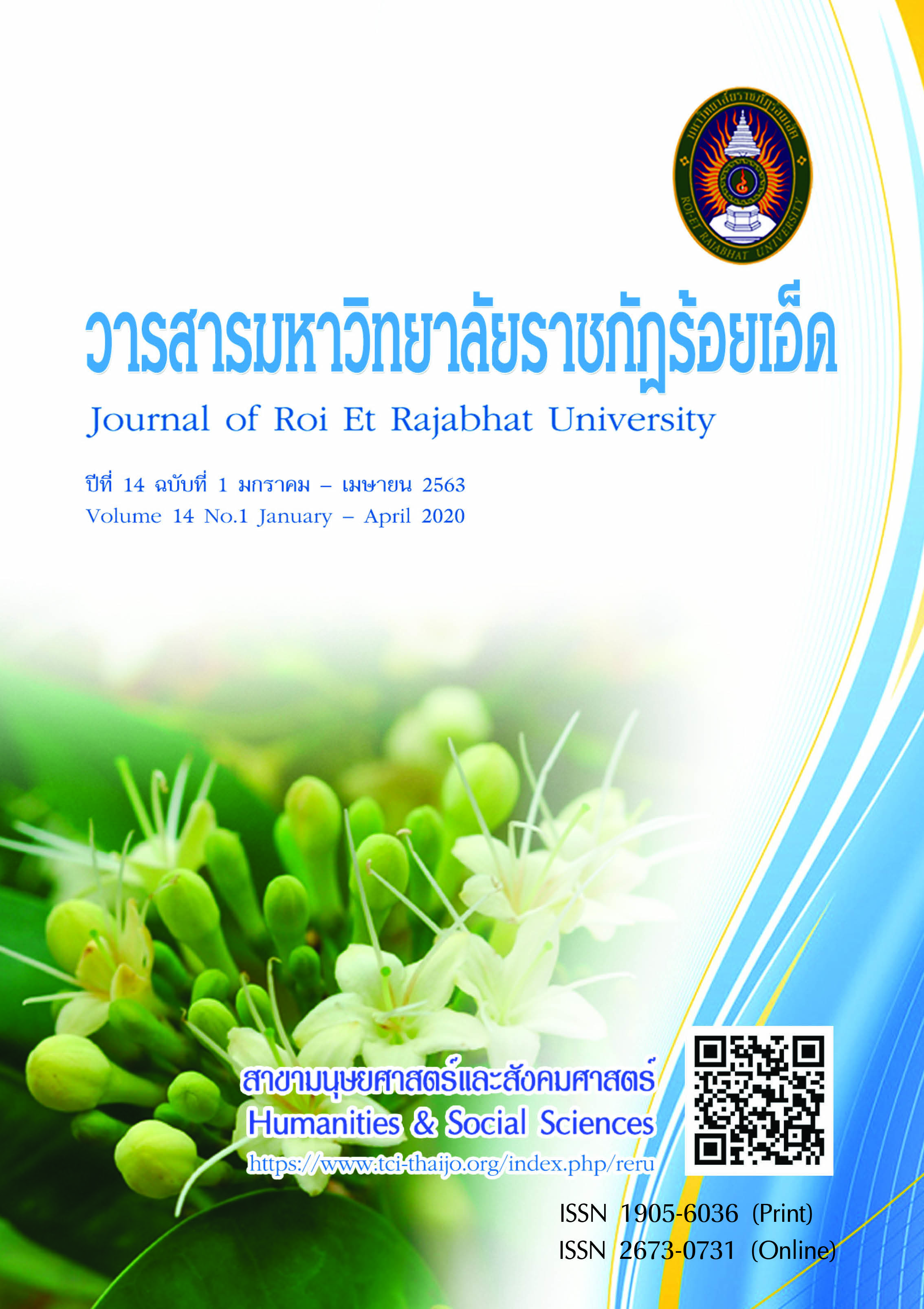Developing Guidelines to Manage Activities for the Development of Learners in Schools under the Secondary Educational Service Area Office 26
Keywords:
Managing Development activities, Guidelines for activity management, DevelopmentAbstract
This research aimed : 1) to study the components and indicators of managing activities for the development of learners, 2) to study the current state and desired state of managing activities for the development of learners, and 3) to develop guidelines to manage activities for the development of learners. The target group consisted of 7 school directors, 13 deputy directors and 296 teachers. The instruments used in this research were an assessment of components and indicators form, a questionnaire, and an assessment of appropriateness form. Statistics employed for data analysis were mean and standard deviation. The results were as follows: 1. The components and indicators of managing activities for development of learners in schools revealed that there were 6 components and 21 indicators. They were: 1) setting objectives and goals with 3 indicators, 2) arranging activities to suit age, maturity, interest, aptitude and ability of learners with 4 indicators, 3) being active learners and teachers as consultants with 4 indicators, 4) cultivating and encouraging consciuos mind for social dedication with 3 indicators, 5) adhering to the principles of participation with 5 indicators, and 6) evaluating the practice of activities with 2 indicators. 2. The current state of managing activities for the development of learners in schools under the secondary educational service area office 26, overall was rated at a low level while the desired state was rated at a high level. 3. The guidelines to manage activities for the development of learners in schools under the secondary educational service area office 26, there were 6 guidelines. These were: 1) setting goals, 2) managing learning activities, 3) defining roles of a teacher, 4) cultivating voluntary mind, and 5) evaluation.
References
กระทรวงศึกษาธิการ. (2545). แนวทางการจัดทำหลักสูตรสถานศึกษา. กรุงเทพฯ: โรงพิมพ์คุรุสภาลาดพร้าว.
กระทรวงศึกษาธิการ. (2551). หลักสูตรแกนกลางการศึกษาขั้นพื้นฐาน พุทธศักราช 2551. กรุงเทพฯ: องค์การรับส่งสินค้าและพัสดุภัณฑ์.
ฐิติพร ทองมูล. (2551). การศึกษาสภาพการจัดกิจกรรมพัฒนาผู้เรียนตามหลักสูตรการศึกษาขั้น พื้นฐานพุทธศักราช 2544 ของโรงเรียนในสังกัดสำนักงานเขตพื้นที่การศึกษาตาก เขต 1. วิทยานิพนธ์ ศึกษาศาสตรมหาบัณฑิต สาขาวิชาการบริหารการศึกษา. กรุงเทพฯ: มหาวิทยาลัยเกษตรศาสตร์.
ธีรเดช ภูกองชัย. (2553). การดำเนินการจัดกิจกรรมพัฒนาผู้เรียนในโรงเรียนมัธยมศึกษา สังกัดสำนักงานเขตพื้นที่การศึกษามัธยมศึกษา เขต 21. วิทยานิพนธ์ ครุศาสตรมหาบัณฑิต สาขาวิชาการบริหารการจัดการศึกษา. มหาสารคาม: มหาวิทยาลัยราชภัฏมหาสารคาม.
บุญชม ศรีสะอาด. (2554). การวิจัยเบื้องต้น (พิมพ์ครั้งที่ 8). กรุงเทพฯ: สุรีวิทยาสาส์น.
มนต์ชัย มั่นวศิน. (2552). การศึกษาแนวทางการจัดกิจกรรมพัฒนาผู้เรียน ของโรงเรียนเอกชนในจังหวัดนครปฐม. วิทยานิพนธ์ ศึกษาศาสตรมหาบัณฑิต สาขาวิชาการบริหารการศึกษา. กรุงเทพฯ: มหาวิทยาลัยศิลปากร.
สำนักงานเขตพื้นที่การศึกษามัธยมศึกษา เขต 26. (2557). รายงานผลนิเทศการศึกษาและผลการพัฒนาคุณภาพ ปีงบประมาณ 2557. มหาสารคาม: สารคามการพิมพ์.
สำนักงานคณะกรรมการการศึกษาขั้นพื้นฐาน. (2551). แนวทางการจัดกิจกรรมพัฒนาผู้เรียน ตามหลักสูตรแกนกลาง การศึกษาขั้นพื้นฐาน พุทธศักราช 2551. กรุงเทพฯ: โรงพิมพ์ชุมนุมสหกรณ์การเกษตรแห่งประเทศไทย จำกัด.
สำนักงานคณะกรรมการการศึกษาขั้นพื้นฐาน. (2553). แนวทางการจัดกิจกรรมพัฒนาผู้เรียน ตามหลักสูตรแกนกลาง การศึกษาขั้นพื้นฐาน พุทธศักราช 2551 (พิมพ์ครั้งที่ 2). กรุงเทพฯ: โรงพิมพ์ชุมนุมสหกรณ์การเกษตรแห่งประเทศไทย จำกัด.
สุขพัชรา ซิ้มเจริญ. (2545). การจัดกิจกรรมพัฒนาผู้เรียน. กรุงเทพฯ: ประสานมิตร.
Downloads
Published
How to Cite
Issue
Section
License
บทความที่ได้รับการตีพิมพ์เป็นลิขสิทธิ์ของวารสารมหาวิทยาลัยราชภัฎร้อยเอ็ด
ข้อความที่ปรากฏในบทความแต่ละเรื่องในวารสารวิชาการเล่มนี้เป็นความคิดเห็นส่วนตัวของผู้เขียนแต่ละท่านไม่เกี่ยวข้องกับมหาวิทยาลัยราชภัฎร้อยเอ็ด และคณาจารย์ท่านอื่นๆในมหาวิทยาลัยฯ แต่อย่างใด ความรับผิดชอบองค์ประกอบทั้งหมดของบทความแต่ละเรื่องเป็นของผู้เขียนแต่ละท่าน หากมีความผิดพลาดใดๆ ผู้เขียนแต่ละท่านจะรับผิดชอบบทความของตนเองแต่ผู้เดียว





